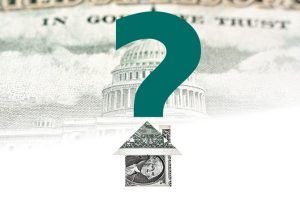By Chris Bell, Associate General Cousel, Compliance Alliance
The challenges we have faced in 2020 have come at us out of nowhere and at a lightning pace. The world continues to face a global pandemic, while regulators and businesses are largely reinventing significant industries. We have dealt with the Paycheck Protection Program, stimulus checks, mountains of loan modification requests, significant pushes to online services, and many other things that were not on our 2020 roadmap. With so many unexpected developments, it’s nice when we have the opportunity to anticipate some of the changes that will require us to take action.
The Consumer Finance Protection Bureau (CFPB) has been busy during the last several months, and the next 12 months promise even more change. The CFPB recently published its spring 2020 Agenda as part of the Trump administration’s spring 2020 Unified Agenda of Federal Regulatory and Deregulatory Actions. The agency recapped some of its actions from recent months and gave us a preview of the regulatory roadmap through spring 2021. Many of the changes follow up on proposals the agency had already announced.
Changes are underway to the escrow requirements of higher-priced mortgage loans (HPMLs). Under Section 108 of the Economic Growth, Regulatory Relief, and Consumer Protection Act of 2018 (EGRRCPA), Congress instructed the CFPB to conduct a rulemaking to exempt loans from the HPLM escrow requirements if the lender has $10 billion or less in assets and meets other criteria. The CFPB published a notice of proposed rulemaking on July 2 to implement Section 108 of the EGRRCPA. Comments are due by Sept. 21, 2020.
As we enter fall, the CFPB plans to take a significant step toward implementing section 1071 of the Dodd-Frank Act. Section 1071 requires lenders to identify women-owned, minority-owned, and small businesses, and to collect data related to race, sex, and ethnicity of the business owners, the purpose of the loan, the action taken regarding the loan, the business’s gross annual revenue, and “any additional data that the [CFPB] determines would aid in fulfilling the purposes of this section.” In October, the CFPB will convene a panel under the Small Business Regulatory Enforcement Fairness Act to discuss this matter. Ahead of the event, the CFPB will be releasing materials that the group will discuss with representatives of small entities likely to be directly affected by the bureau’s rule to implement section 1071.
The fall will also likely see two proposals to modify the Home Mortgage Disclosure Act (HMDA). The first proposal follows the May 2019 advance notice of proposed rulemaking concerning data points that banks must report under the 2015 HMDA rule and coverage of business or commercial purpose loans. The second proposal addresses the public disclosure of HMDA data in light of consumer privacy interests.
In October, the CFPB expects to issue a final rule after the May 2019 proposed rule that would prescribe rules under Regulation F to govern debt collectors activities. The proposed rule would address communications connected with debt collection; and interpret and apply prohibitions on harassment or abuse, false or misleading representations, and unfair practices in debt collection. The CFPB did not announce when it plans to take final action on its supplemental proposal issued in March 2020, which addressed time-barred debt disclosures.
Finally, the CFPB considers a proposed rule that would offer a new “seasoning” definition of qualified mortgages (QM). This definition would create an alternative pathway to QM safe-harbor status for mortgages when the borrower has consistently made timely payments. This action would come on the heels of proposals to address the impending expiration of the Government-Sponsored Enterprises (GSE) Patch and will amend the General QM definition in Regulation Z to replace the debt-to-income limit with a price-based approach. The comment periods for the existing proposals close on August 10 and September 8, respectively.
The CFPB also discussed its participation in the interagency rulemaking processes to update the guidelines issued by Financial Institutions Reform, Recovery, and Enforcement Act of 1989 (FIRREA). This partnership with the Board of Governors of the Federal Reserve System, the Office of the Comptroller of the Currency (OCC), the Federal Deposit Insurance Corporation, the National Credit Union Administration, and the Federal Housing Finance Agency is developing regulations to implement the amendments made by the Dodd-Frank Act to the FIRREA guidelines concerning appraisals. The changes require implementing regulations for quality control standards for automated valuation models (AVMs).

One of the items listed in the preamble to the CFPB’s Spring Agenda that has not generated much attention is the agency’s study of the impact of artificial intelligence (AI) in the context of Federal consumer financial laws and regulations. Banks raised issues related to AI in response to the CFPB’s 2017 Request for Information Regarding Use of Alternative Data and Modeling Techniques in the Credit Process, the Bureau’s 2018 Calls for Evidence, and other outreach since then. The Bureau continues to monitor AI developments and is evaluating whether rulemaking, a policy statement or other action may be appropriate. With the OCC’s recent proposal regarding technological innovation, it would not be surprising to see the CFPB announce something on this topic in the near future.
To fulfill its obligation under Section 1022(d) of the Dodd-Frank Act, the CFPB is also conducting its five-year review of its Integrated Mortgage Disclosures Under the Real Estate Settlement Procedures Act (Regulation X) and the Truth in Lending Act (Regulation Z) Rule and certain amendments. The CFPB announced it plans to issue its TRID Rule assessment report by October.
The CFPB also expects to conduct an additional review under section 610 of the Regulatory Flexibility Act, which requires the Bureau to consider the effect on small entities of the rules it promulgates. The agency plans to review the Regulation Z rules that implement the Credit Card Accountability Responsibility and Disclosure Act of 2009.
Stay tuned to Compliance Alliance for announcements on these developments and more.
This story appears in Issue 3 2020 of The Arizona Banker Magazine.









